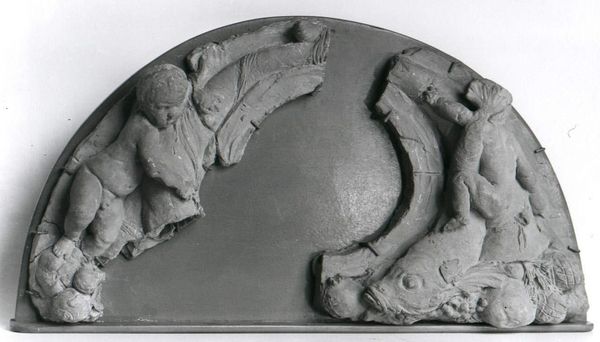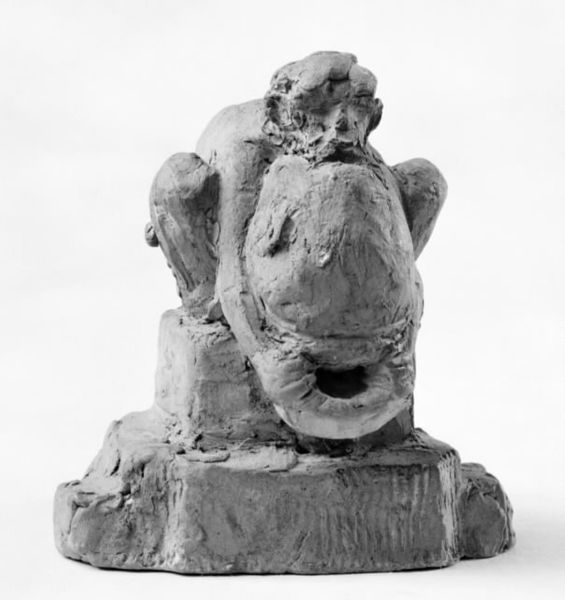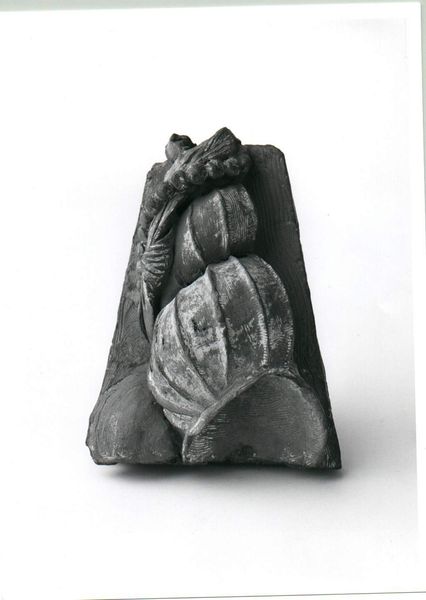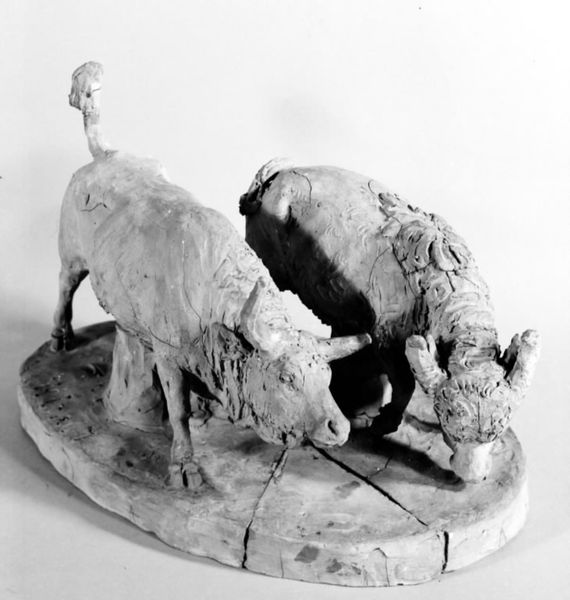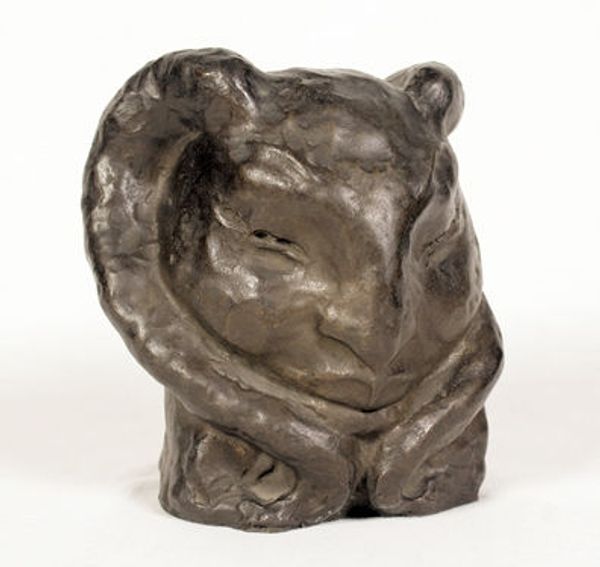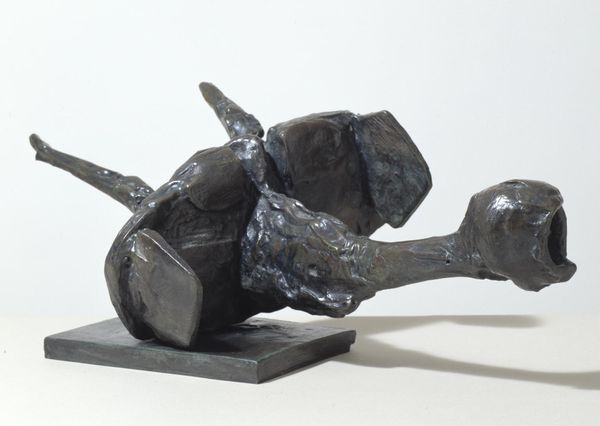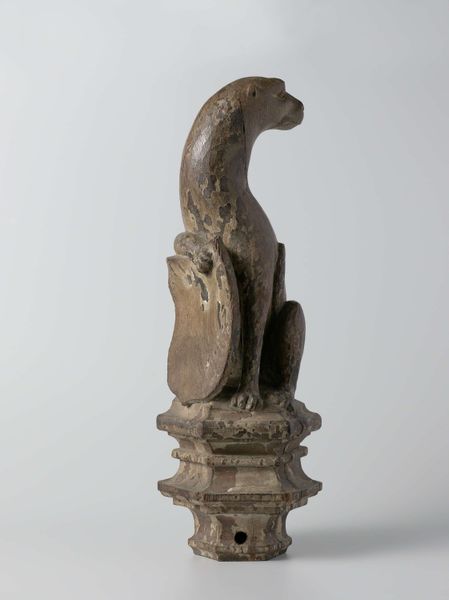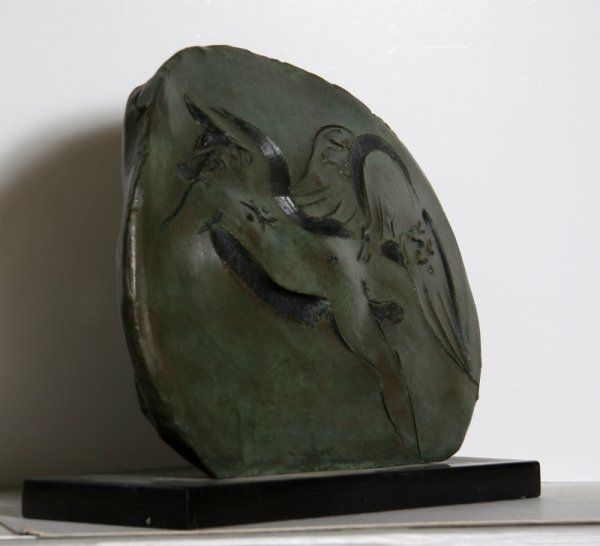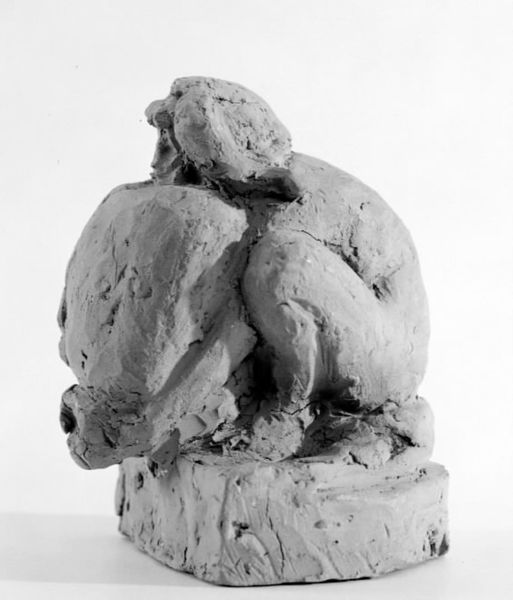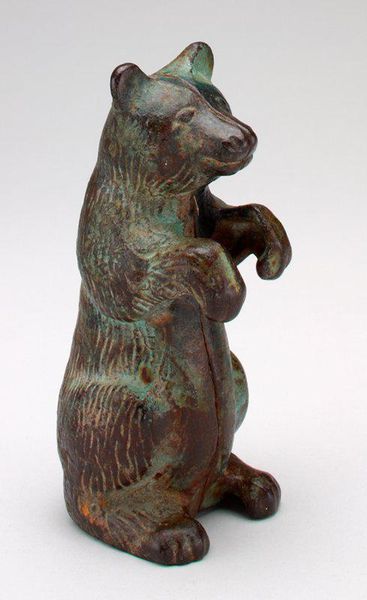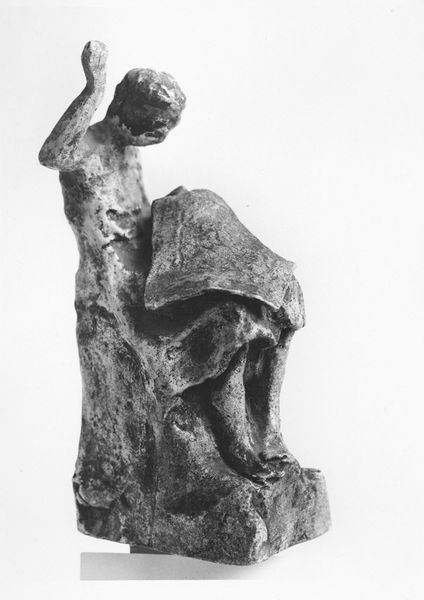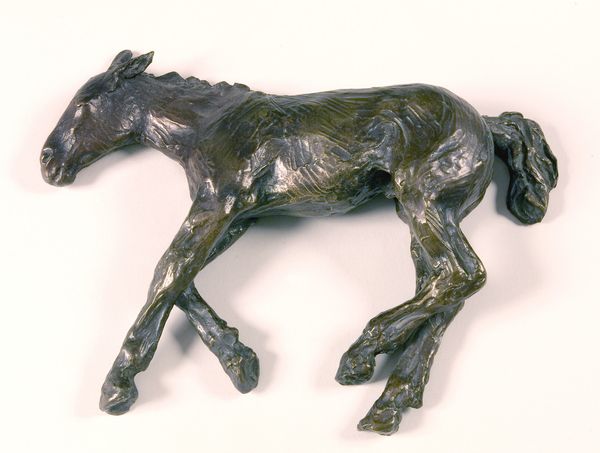
Fragment of the Left Side of a Model for an Overdoor Lunette with Putti and Wolves for the Amsterdam Town Hall (now Royal Palace) at Dam Square c. 1652
0:00
0:00
relief, sculpture, wood
#
narrative-art
#
baroque
#
sculpture
#
relief
#
figuration
#
sculpture
#
wood
Dimensions: height 39.5 cm, width 40.5 cm
Copyright: Rijks Museum: Open Domain
Curator: Oh, the raw energy! It practically vibrates off this fragment. There’s something almost… primal about it, wouldn’t you agree? Editor: It's an interesting piece. What we're seeing is a fragment, specifically the left side, of a model made around 1652 by Artus Quellinus, meant for an overdoor lunette in the Amsterdam Town Hall, now the Royal Palace on Dam Square. Curator: So, a royal commission! That explains the bombast a bit. And the putti. But the wolves… I love the snarling intensity of them. They almost steal the show. Was that deliberate, do you think? Editor: Perhaps. The Amsterdam Town Hall was designed to project an image of civic virtue, and these motifs draw on classical mythology and Roman ideas of governance. But to answer your question more fully, the wolves and putti here aren’t just decorative. The Town Hall project represented the city’s ambitious attempt to create a self-fashioned historical narrative in asserting power through trade and governance. Curator: Historical narrative, yes, but look at the sheer drama of it! The way the light would have played on those carved surfaces... It feels almost theatrical, doesn’t it? This little drama of innocence and... well, not evil exactly, but wildness? Editor: Definitely. The tension between the supposed innocence of the putti and the raw aggression of the wolves is crucial to the work's Baroque style, as the period grappled with societal changes and colonial trade—all framed with biblical concepts and allegorical representations. The symbolism goes further: these wolves may be representing darker desires that accompany power. It all served as a grand allegory of good governance. Curator: Mmm, so a bit of a wolf in sheep's clothing then? Fascinating. Even just this little fragment hints at the sheer scale and complexity of the whole endeavor. I wonder how much of the artist's own spirit went into these figures? Were they just following orders, or did they get to have a say? Editor: That's the crucial question, isn't it? Thinking about labor is key. And if one considers Quellinus's personal history—he was Flemish but worked in Amsterdam during its Golden Age—questions of identity, power, and colonial aspirations undoubtedly inform the very material reality of the sculpture itself. Curator: Right, the sculpture—wood brought to life by an artist shaped by specific circumstances, forever capturing the complicated story that is also now captured here in our museum. Editor: Precisely, revealing that even a fragment of history, like this one, contains whole worlds within.
Comments
No comments
Be the first to comment and join the conversation on the ultimate creative platform.
